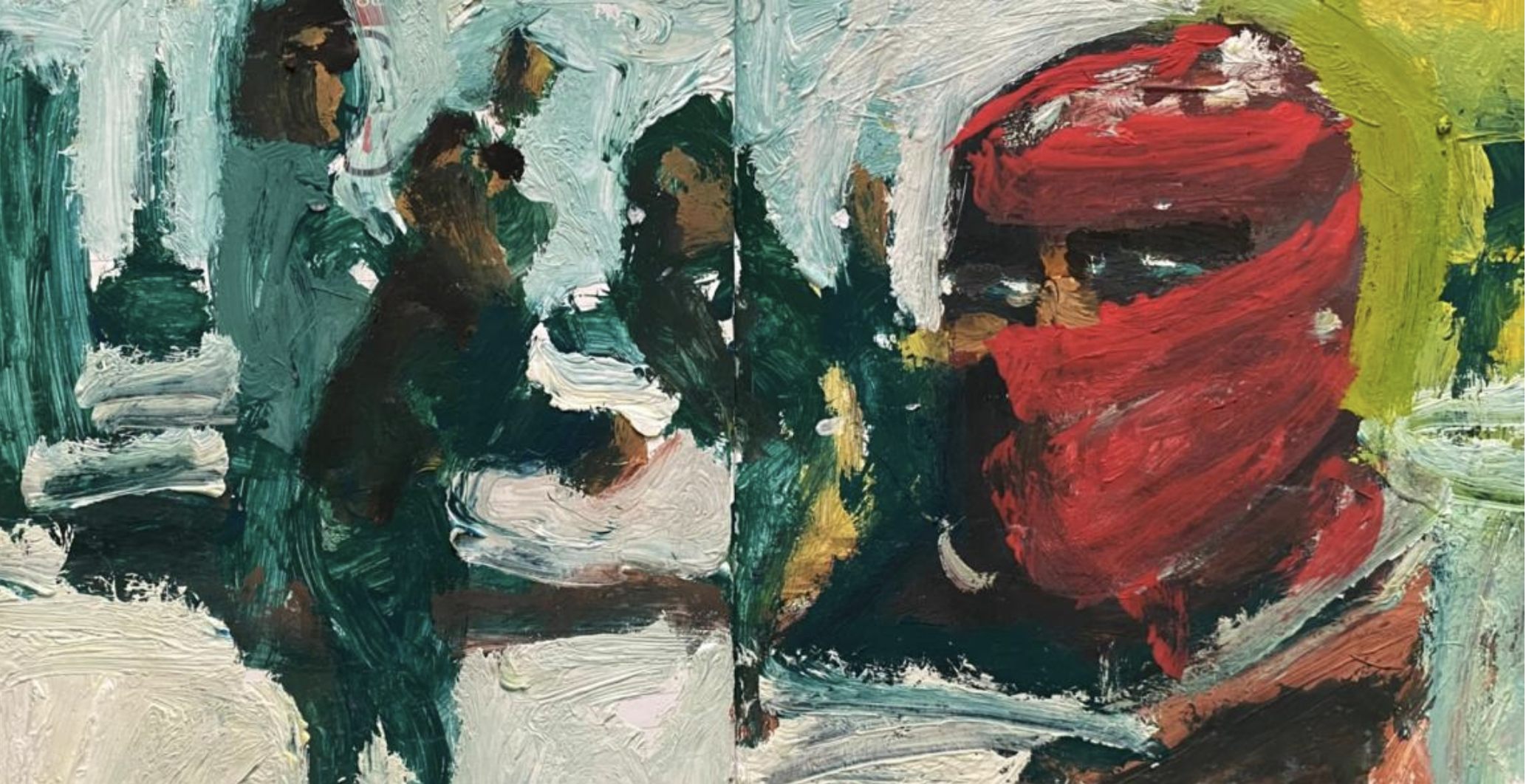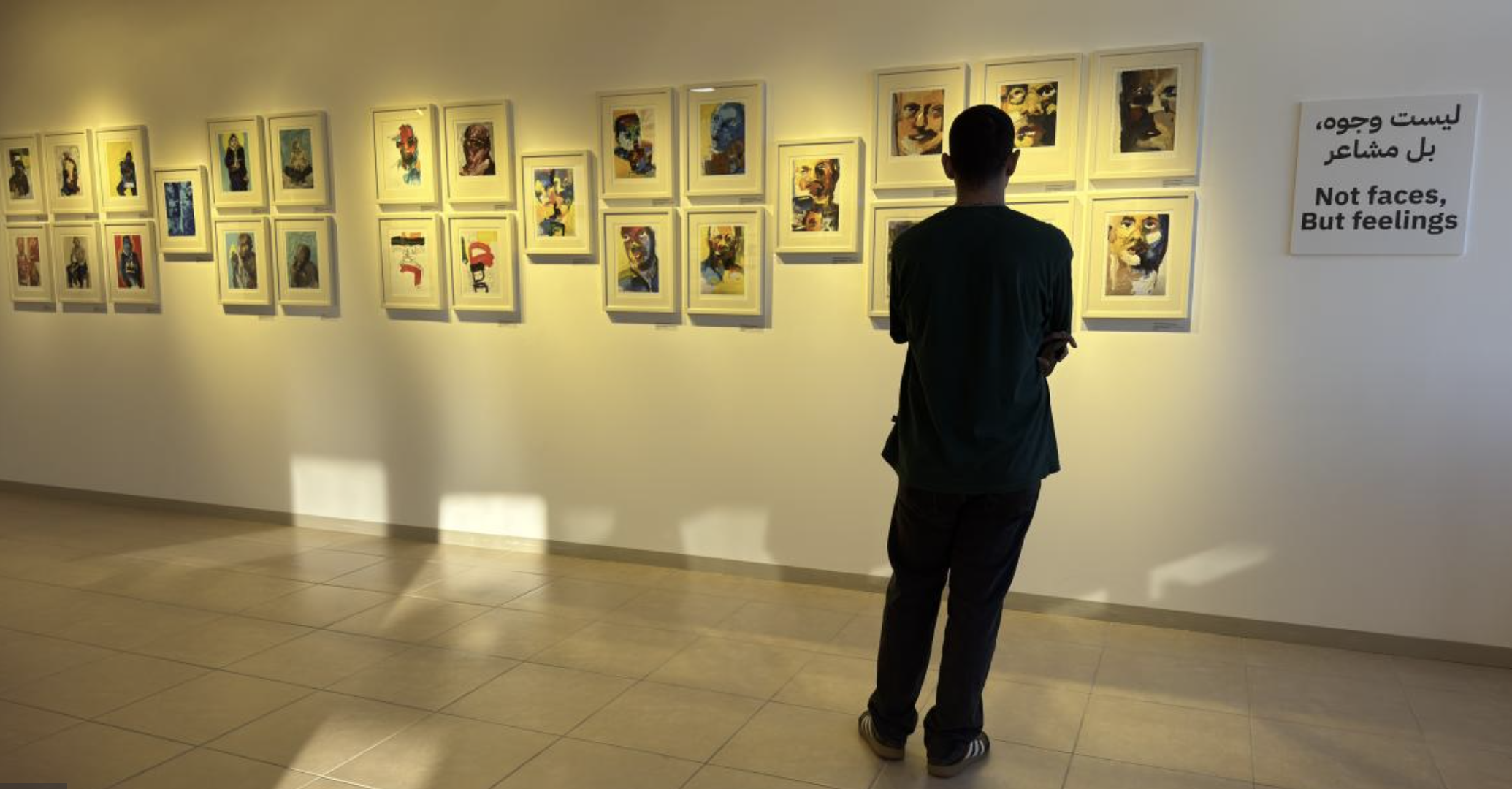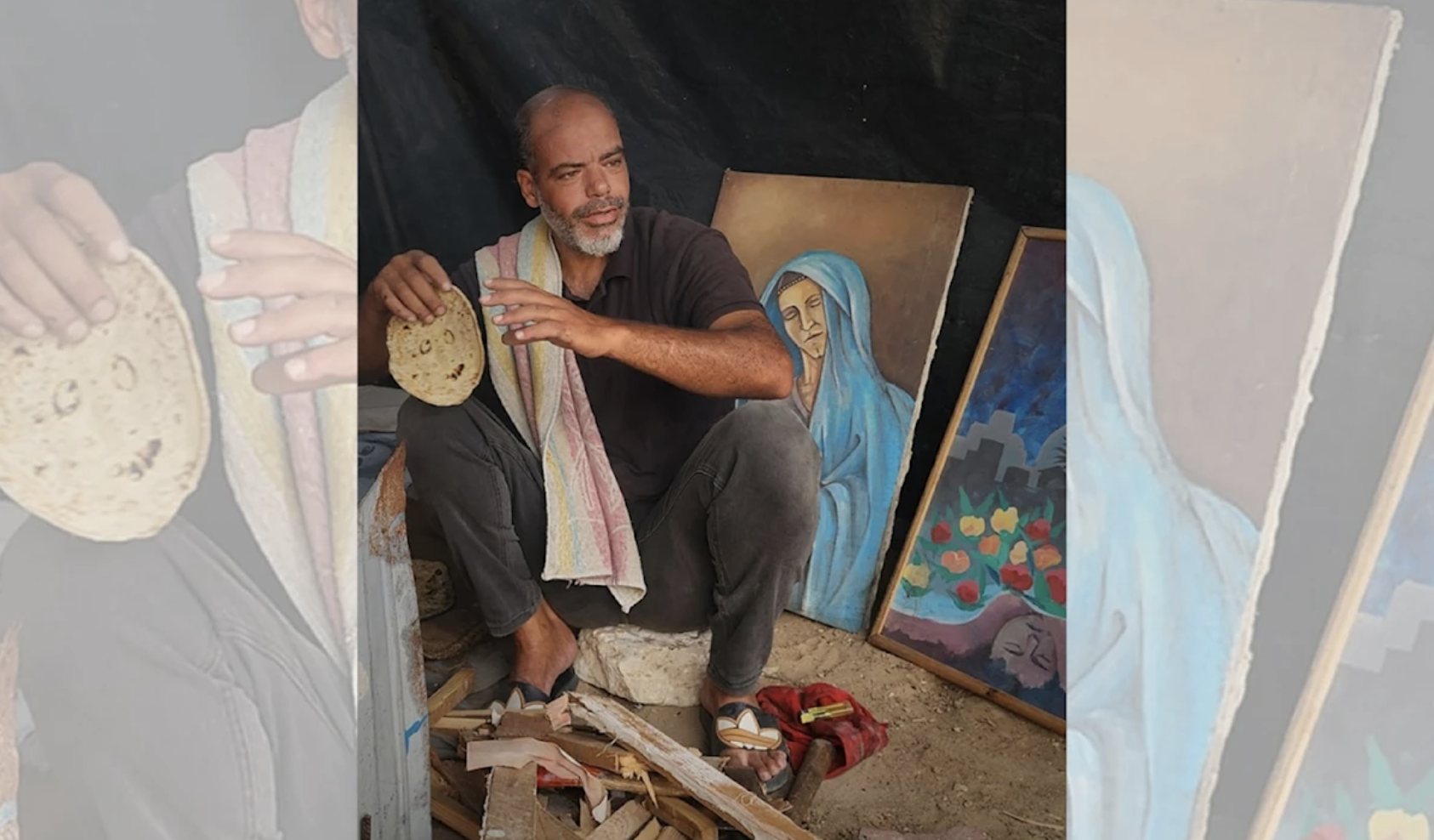Azza Al-Sheikh Ahmad: The Story of a Moving Place
"The Story of Azza and Gaza" is the title of the first exhibition Azza held in Gaza. Azza Sheikh Ahmad, who was influenced by Palestinian artist Kamal Al-Mughani and his Cubist-like style reflecting angles and edges, continues her journey by incorporating mythical and folkloric tales. These elements lend her work a fluidity that allows for multiple interpretations. Her art seems to embody the story of Gaza through the features of the women she draws. Azza and Gaza are one, as the city becomes a narrative of the Palestinian woman—like solid ground adorned with the traces and marks of the place and its history. This is why Azza chose to draw inspiration from Picasso, bringing his Cubist influence to the colorful faces in her work. The sorrow of Gaza ignited in her a passion for vibrant colors and innocence.
Azza, an art education specialist and educational supervisor, brought a fresh perspective to her choice of colorful spaces and hidden childhoods that spark the imagination, creating stories open to individual interpretation. When viewing her work, childlike figures, horses, and lines emerge, telling stories of margins not captured by photographs or screens. Her art questions the narrative, particularly the personal story within a collective framework that is open to tales and imagination, not confined by oppression. Azza’s artistic environment may have been influenced by Egyptian artist Helmi Al-Touni and his childlike themes. However, she also draws from a lineage of artists who embraced Arab and Egyptian heritage motifs that remain present in her paintings.

Azza Al-Sheikh Ahmad, Trojan Horse (2023)
The place has its own language that is deeply rooted in geography and cannot be entirely severed. This raises the question: To what extent have Azza’s works moved, displaced as she has been because of the genocide? Or does the geography of place retain its own spirit and identity that belong to Palestine, the Arab world, and even humanity at large? When Azza lost her artworks during the ongoing genocide, she transitioned to drawing in black and white. Has the landscape of her art changed due to the genocide? Are her black-and-white paintings the remnants of her work after devastation? Her recent pieces suggest that the absence of color is a new and creative phase in the life of an artist enduring destruction.
The lines in her work continue to resist, as if destined to depict the dreamer's features amidst war. The vibrant, colorful atmospheres she once used to depict the place within her were tools of resistance against sorrow. However, black and white seem not to abandon that purpose but instead assert: Gaza remains Azza. Even as a flowering layer of its land is lost, the artist might someday revive it. Yet, there is an indelible part—its identity and that of the place: Gaza. Even if the figure disappears, as in one of her lost works from 2023, The Trojan Horse, the horse will emerge from history, dancing with Arabic letters that fill the space in Azza’s unique style. This declares that her identity is rooted beyond figures and features.
This reminds us that our work on ArtZone Palestine is to question the meaning of these surviving artworks. As vivid images, they perhaps have the power to return to their original context, inviting contemplation of the place within them. They warn the hand that erases that the artist’s hand will draw again and return to movement.
Taghrid Abdelal
A Palestinian poet and writer lives in Lebanon.
Published on 26.12.2024


